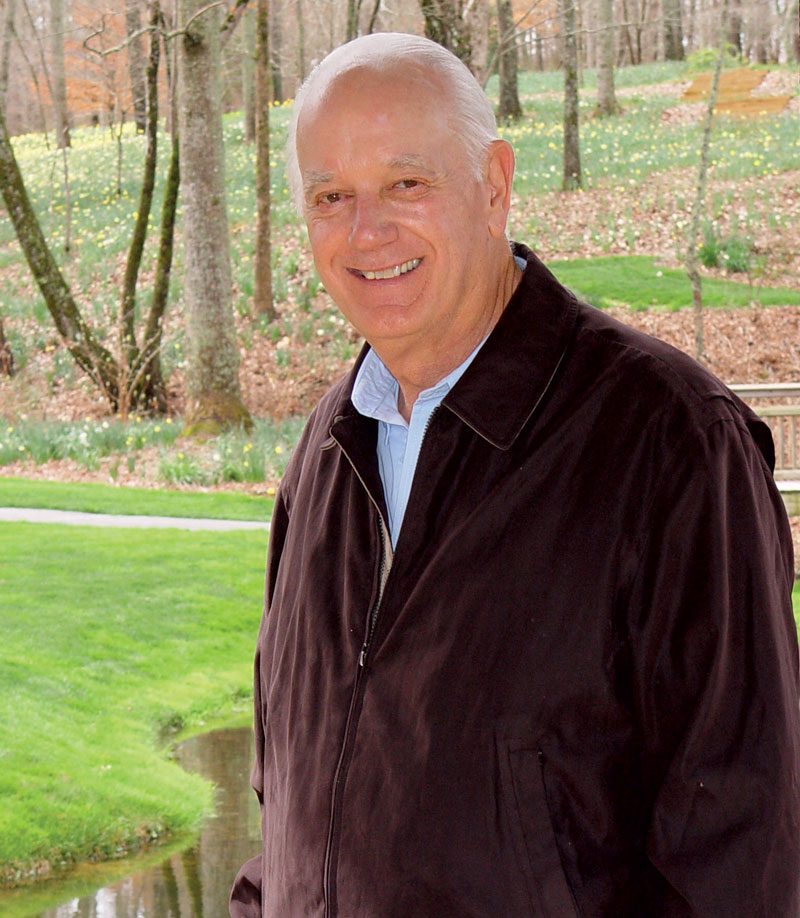
Photo courtesy of Gibbs Gardens

Photo courtesy of Gibbs Gardens
Preeminent Atlanta landscaper Jim Gibbs founded Gibbs Gardens in Ball Ground, Georgia, in 1980. He opened to the public 10 years ago this spring.
“Every year, I get a little uglier—but my plants get more beautiful.” So says Jim Gibbs, founder of Gibbs Gardens, where 20 million yellow, orange, and white blooms paint its 336 acres and inspire daffodil lovers from across the region to make the springtime pilgrimage. For this year’s Daffodil Festival (held mid-February through mid-April), Gibbs planted 350,000 additional bulbs for good measure. “The new ones are designed to look like streams of color curving their way down the gardens,” he says. “You will not be disappointed.” Here, he shares the best times to come to the festival, his favorite spot in the gardens, and the one plant everyone should own.
Perfect Timing
“I suggest coming three times to our Daffodil Festival. The early daffodils that bloom the first two weeks are usually solid yellows that really pop. Two weeks later, orange ones come together with the yellows, for a beautiful effect. And two weeks after that, the late-blooming, cream-colored daffodils come in with tons of fragrance. When you walk into the garden, you’ll say, ‘Oh my goodness, where is that heavenly scent coming from?’”
What’s Old Is New
“When I began planting our 40-acre Japanese garden—the largest in the nation—I had to find mature plants to work with. I purchased 65-year-old Pfitzer junipers and began to prune them to see their trunks and cloudlike layers. The dawn redwoods and bald cypresses were 25 years old when I moved them in. Today, we have 95-year-old plants in the Japanese garden. There’s nothing pretty about a brand-new garden; it has to mature.”

Photo courtesy of Gibbs Gardens
Must-Have Maple
“I can’t name my favorite plant—that would be like naming my favorite grandchild. But I do think a Sango kaku Japanese maple should be in every person’s garden. In the early fall, it starts out a really pretty yellow. Then it begins changing color; its leaves turn peach at the tips. In the end, it moves toward a golden color. When it drops its leaves, all the stems turn coral. In the spring, it grows small, beautiful chartreuse leaves that change to a medium green and finally into more of a summer green. All year long, it’s special to watch.”
A Place to Reflect
“No question about it: My favorite place here is the Japanese garden. It has plants with texture and color, water for reflections and sound to evoke the senses, and stones that are all symbolic. One symbolizes longevity; another is supposed to make you think of vacations you took with loved ones. I go there every day to meditate because it’s a great place to let your mind go free.”
As told to Allison Entrekin
This article appears in the Spring & Summer 2022 issue of Southbound.















